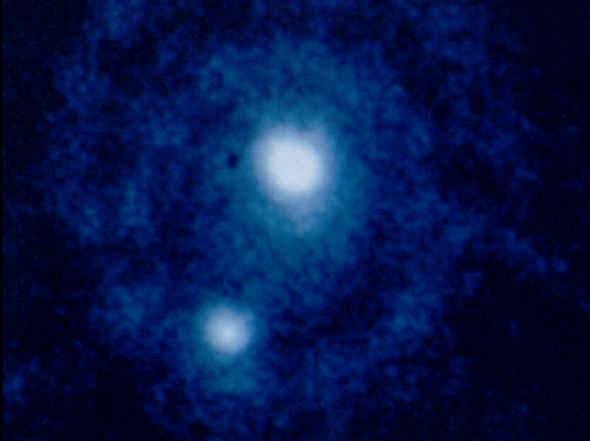
Planet Pluto
Pluto is usually the farthest planet from the Sun, but sometimes it is closer Sun than Neptune. This is due to Pluto's highly eccentric orbit. This is only one of the things that set Pluto apart from the other planets. Pluto is much smaller than the other planets, in fact it is smaller than seven moons: the Earth's Moon, Io, Europa, Ganymede, Callisto, Titan and Triton. Pluto also rotates counter to the general direction of the Solar System. The plane of Pluto's equator is at almost right angles to the plane of its orbit ( although this is not unique, Uranus is similiar ). Optically Pluto also has the second largest contrast range in the Solar System. So although classed as a planet there have been suggestions that that it would be better thought of as one of the Trans-Neptunian objects (Kuiper Belt), an asteroid or a comet. It's similarity to Triton has led to suggestions that Triton also once had an independant orbit but it was captured by Neptune.
We know very little about Pluto, it is the only planet that has not so far been visited by a spacecraft and even the Hubble Space Telescope can resolve only the large features. Even Pluto's radius is only known with an error of almost one percent. And although the combined masses of Pluto and Charon are well known, the individual masses are not. ( It is believed that Pluto is aproximately ten times larger ). Pluto's composition is not known, but it is believed to be a mixture of 70% rock and 30% water ice ( like Triton ). The bright areas may be a covering of ices of nitrogen with small amounts of solid methane, ethane and carbon monoxide. Pluto's atmosphere possibly consists of nitrogen with some carbon monoxide and methane and will be very tenuous and it may exist only for part of the planet's year.